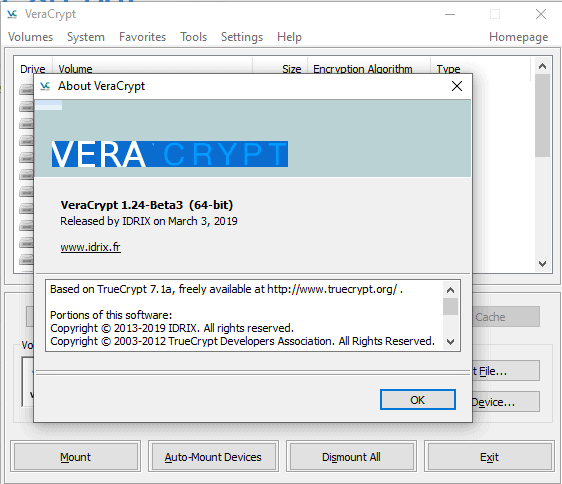

- #How to use veracrypt rescue how to#
- #How to use veracrypt rescue windows 7#
- #How to use veracrypt rescue free#
Thanks to Macrium for a great product! Frank The reason for doing it was to eliminate having to decrypt the drive prior to imaging and reencrypting the drive after. It performed seamlessly inside the rescue environment at boot. Hello, I was able to use Macrium Reflect for an imaging back up and restore of a Jetico Best Crypt Volume Encrypted SSD. There are some gotyas a) creation of a bootable WINPE pendrive containing Macrium and Veracyrpt b) Forensic clone is required c) Restoring the boot/bcd file d) Restoring the original DISK ID. I outlined my steps so others would not have to reinvent the wheel. I was just reporting on my success in cloning a HDD will retraining VeraCrypt disk encryption AND having the clone be able to add incremental backups to a existing Macrium backup.
#How to use veracrypt rescue windows 7#
That's all very interesting, but-what are you trying to do? Do you want to clone or to image the drive? Is it a Windows 7 system disk? I did not try restoring the DiskID before booting perhaps that would have been enough. I do not know what Windows does during the boot cycle, what information it reads from the boot sector and what information it changes. Using the extended backup created in Test 2 or Test 4, I was successfully able to restore a HD, just asin Test 1.Īs Imentioned before in Test 3, I am still confused why the Forensic copy did not boot correctly. As long as the DISK ID was restored to the original, I was able to append an additional increment to the backup. Repeat Test 2 on the HD I restored in Test 3. In this case I did not try to manually restore the BOOT directory from the original disk. Using Reflect's tool to fix the Boot Sector, in this case, made the disk unbootable. Please note, apparentlyVeraCrypt leaves certain bits unencrypted on a HD, even when the entire disk is encrypted. The 'notgenuine windows' error could not be fixed by ONLY changing the Disk ID. The Disk ID was not restored during the restore (which also confused me), btw. I was able to fix this situation by using the Rescue Environment, mounting both the original HD and the restored HD (using VeraCrypt), and copying C:\BOOT\BCD from the original HD to the target.

The problem was that Windows considered the system not to be genuine. It did indeed boot with the encrypted password. I would have thought this bit by bit clone would simply boot as my original encrypted HD. Since the encrypted disk is NOT mounted, the backup must be a 'Forensic' (sector by sector) backup. Use the Rescue Environment to clone an encrypted disk. (The Disk ID can be foundat the end of the 000.mrimgfile and the end of any of the 'initial files' of an incremental backup). The solution was to use the Windows command line tool DISKPART (or any number of tools) and restore the Disk ID to that of the original disk. This failed with the error "At least one partition in the Image to append to cannot be found". This was necessary to be able to mount the drive on windows.īoot from the restored HD created in test 1 and try appending to the existing Reflect image. One important caveat - Reflect changed the Disk ID of the target HDD at the end of the restore. I did not try using the MR internal tool.
#How to use veracrypt rescue free#
There are other tools, several free ones, which also work. I used NeoSmart's Easy Recovery Essentials ( ) to repair the boot sector. As expected the restore was unencrypted, but was not bootable. The discussion below includes some tests I preformed before I got to cloning the VeraCrypt HDD while retraining the encryption.įrom within Windows7 use Reflect to restore and Image of a VeraCrypt encrypted HD. The Rescue Environment allows me to mount the VeraCrypt volumes and gave me complete access to the volumes.

Following the published instructions and adapting them to VeraCrypt (honestly trivial) I was able to create a MR and VeraCryupt Rescue Environment.
#How to use veracrypt rescue how to#
The document explains how to include TrueCrypt on the MR Rescue Environment. I have completed some experiments using Macrium Reflect (MR) and VeraCrypt.

Please note, I was able to continue incrementing an existing MR on the cloned HDD after this procedure as well.


 0 kommentar(er)
0 kommentar(er)
